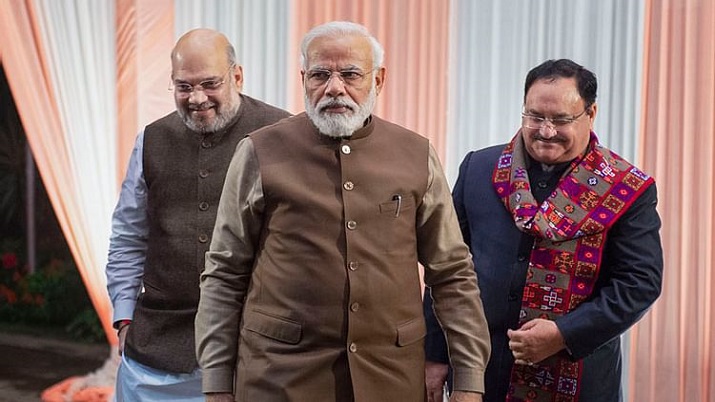The NDA’s stupendous performance in Bihar, despite the fact that the alliance of BJP and JD(U) fought the election with Nitish Kumar – a three consecutive term-serving Chief Minister as the face of their campaign, has shocked political analysts and psephologists, and even the BJP’s supporters alike. The NDA fought the Bihar elections with fatigue and a massive anti-incumbency working against them. Yet, the charisma of Prime Minister Modi, the widespread BJP machinery working day and night, and the dedication of BJP leaders ensured that such factors are discounted, and that the saffron party emerges as the most important player in Bihar.
And emerge it did, as the second largest party in the state, behind the RJD by only one seat. The BJP has been successful in reducing hardline caste-based parties to irrelevance in the state, as much of the state’s electorate rallied behind them, dumping long-held loyalties to political fronts whose existence was hinged upon the caste factor. The BJP has got its Bihar arithmetic impressively right, and the voters flocking to cast their ballots in favour of the saffron party, instead of smaller-caste based parties is a vindication of the fact that perhaps Bihar, for the first time, has been able to dilute caste-based voting patterns.
Bihar was always a tough spot for the BJP, due to the immensity of castes comprising the electorate. A multitude of smaller parties played spoilsport, and ensured that communities which they claim to represent do not end up voting for the BJP. This time around, the Bhartiya Janata Party has, for the first time perhaps, been able to breach such a wall. This does not mean that caste and religion played no role whatsoever in Bihar, however, it certainly has been observed that with time, the electorate can depart from such polarizing factors.
In terms of vote share, the RJD topped with 23.1 per cent followed by the BJP at 19.5 per cent. With 15.4 per cent, the JD(U) was third on the list, followed by others at 18.8 per cent. The Congress managed just 9.5 per cent of the votes, while the BSP and AIMM ended up with a vote share of 1.49 per cent and 1.24 per cent. It must be mentioned that the ‘others’, who have garnered 18.8 percent of the vote, comprise a sea of caste-based parties, who put together still, have not been able to beat the BJP in terms of vote share, leave alone in terms of the seats won.
In fact, defeat in the Seemanchal region, and in areas where the Muslim-Yadav vote bank has historically helped them sweep across effortlessly, the laalten party was made to eat humble pie this time around by the NDA, as the BJP-JD(U) combine won in bulk, with some help from the AIMIM, of course. Asaduddin Owaisi played the elegant role of being the massive-vote cutter for RJD in Muslim-concentrated areas particularly.
Now that the BJP has breached Bihar, it will not be as much of an uphill journey for the party to emerge as an absolute political hegemon in the state. As a matter of fact, the BJP is now expected to consolidate on its own support on the ground, while also further expanding its base. In many ways, the 2025 elections in the state will be telling as to how much the BJP has scored in making caste a secondary issue for the vast majority of voters in the state. If in a matter of five years, the BJP has managed to increase its seat tally by over 20 seats, it goes without saying that Bihar in the next five years will be able to easily rally behind the saffron of the BJP.

